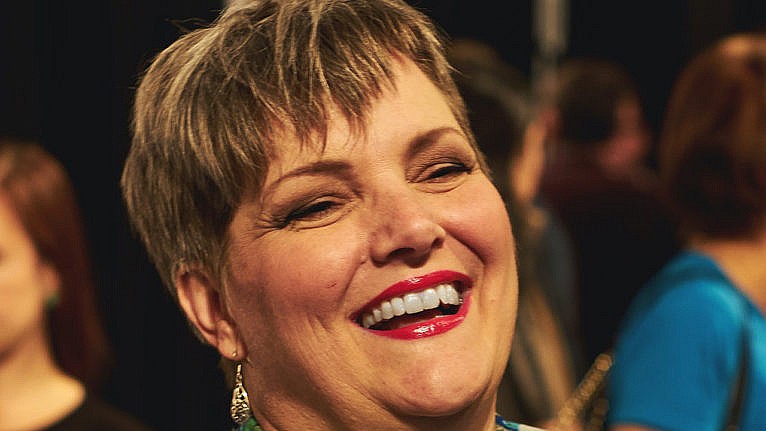Peggy Pickett wants to raise awareness of the need for early detection, the value of self-advocacy, and the importance of patient community support.
Peggy Pickett, 57, was leading a full and active life–working a full-time job she loved, traveling, volunteering, knitting, playing guitar and enjoying time with her family.
In early 2012, she started feeling a strange pain on the upper right side of her abdomen. Being a diabetic, she checked in regularly with her family doctor and would frequently mention it to him. “He basically dismissed it as a pulled muscle and nothing that proper diet and exercise couldn’t fix,” says Peggy.
A long two-year road to a diagnosis
After repeated attempts to describe her condition to her physician with no outcome, Peggy decided to stop talking to her doctor about it. But the pain persisted, and in September 2013, she suffered an excruciating episode. Peggy could no longer remain silent, something needed to be done immediately.
Her family doctor ordered an ultrasound which she received in December. That same evening, her GP called to report that the results showed something suspicious. Peggy was immediately referred to a cancer centre to conduct further testing. Six days later, a gynecologic oncologist told her she had two tumours–one the size of a cantaloupe on her right ovary and another the size of an orange or small grapefruit on her left one.
In January 2014, surgery confirmed a diagnosis of advanced high grade serous ovarian cancer. There were 11 tumour sites and multiple clusters of tumours, including a few on her liver. Peggy finally had her answer. The pain on her upper right side turned out to be from the tumours on her diaphragm. “They would twist with exercise or breathing, and I’d been living with that for two years,” she says.
One month later, on her 50th birthday, Peggy started her first chemotherapy treatment.
Being aware of the early signs is imperative
Typical symptoms are bloating, difficulty eating, pain and changes in bladder habits–but these non-specific symptoms can easily be confused with other benign conditions. A woman may also experience other symptoms, as Peggy did, that don’t seem related to ovarian cancer. “The pain I had on my right side was not a classic ovarian cancer symptom,” says Peggy.
It’s this awareness and understanding of early signs that are crucial for discovery and treatment. According to Marni Freeman, Medical Director at GSK Canada, “Raising awareness around ovarian cancer, including the signs and symptoms, is critically important. Well-informed women have a better chance of discovering the disease early and having a positive outcome,” says Freeman. “With the patients’ voice at the heart of our mission, at GSK we are committed to fulfilling unmet patients’ needs by developing innovative medicines that help improve the quality of life and outcomes for Canadian women living with the disease.”
From patient to advocate—for herself and for other women
Peggy has come to terms with her anger about her dismissed complaints. “I had stopped being a self-advocate and I realize now that doctors can’t diagnose what you don’t tell them. If they don’t suspect it, they won’t detect it and if they don’t detect it, they can’t treat it,” she says.
Then something changed after her second round of chemo. “I felt the need to know more about what was happening so I could make informed decisions,” says Peggy.
She contacted Ovarian Cancer Canada to request a free copy of its resource book. “This was a pivotal moment when I went from being a patient to a self-advocate,” she says.
Rather than waiting for her treatment to end and then picking up her life again, Peggy made a choice: to live as much as the day could hold, to find good sources of information and to share the power of her experience rather than give that power away. “I set out to become the world’s leading expert on Peggy and, as such, have become a valuable member of my medical team,” she says.
While Peggy went through three recurrences, two more rounds of chemotherapy, and two rounds of radiation, her take-charge self-advocacy approach ensures she has access to the latest and most effective treatments for her needs. She’s now a peer volunteer with Ovarian Cancer Canada and constantly looks for opportunities to improve the outcomes for women living with the disease. “Becoming educated in my disease and the medical system, and becoming an advocate for myself and other women has been my road away from powerlessness,” says Peggy.
Her advice to other women: “Become the world’s leading expert on you. Know yourself, know your body, and know your options.
Article Credits: Chatelaine
